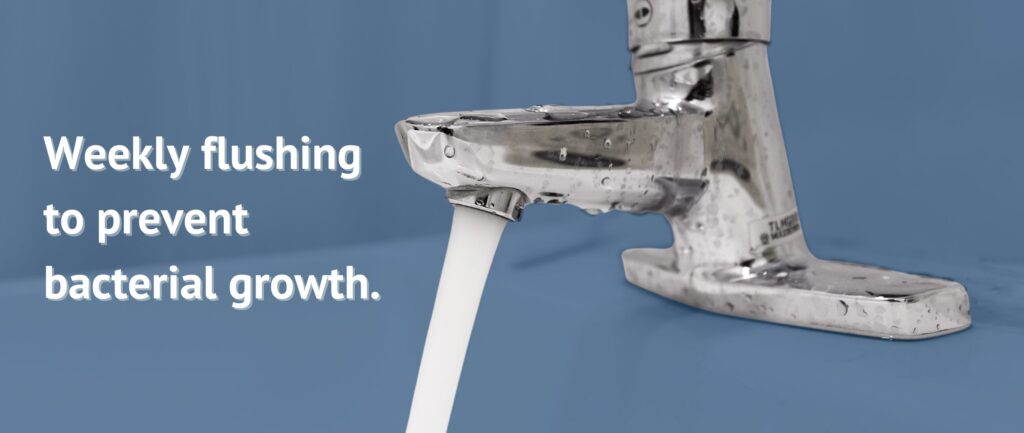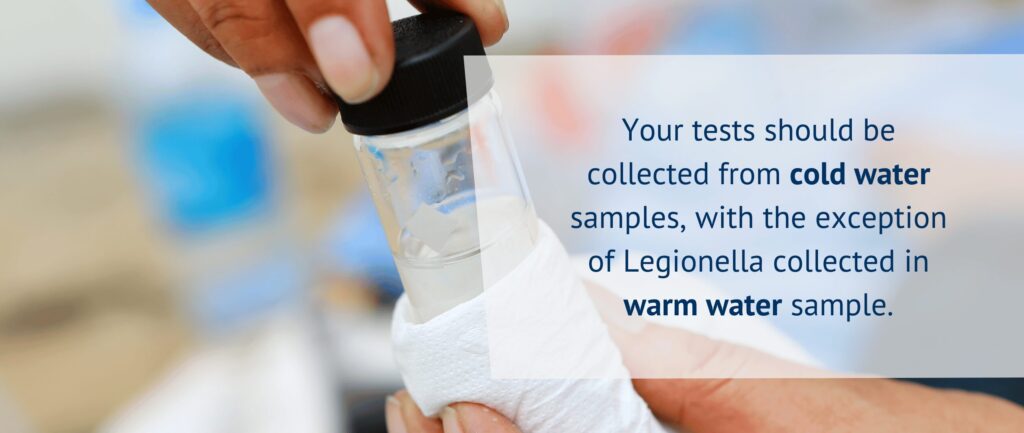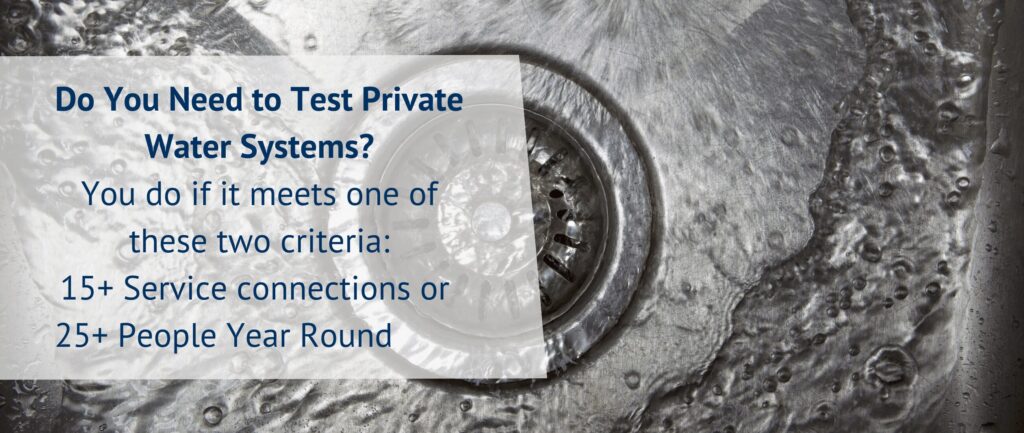
In January 2024, the GSA released new guidelines for potable (drinking) water testing (PBS 1000.7A). This order was called “Drinking Water Quality Management” This includes water sampling and flushing. It sets scheduling and timelines for these tests, with their respective analysis. It identifies lead, copper, Legionella, E. Coli, and total coliform as the primary contaminants to test for. This new January 2024 standard relies on many of the practices outlined in the ASHRAE Standard 514. The PBA 1000.7A is a replacement of the previous requirements set from PBS 1000.7A and the Facilities Management Alert FM-FY23-02.

The General Service Administration requires weekly flushing in certain areas. These include showers, healthcare units, and showers. Without flushing, water remains stagnant. This stagnant water is susceptible to bacterial growth. Keeping the water flowing once a week reduces the risk of bacteria having enough time to grow and creates a health risk.
Lead is being tested for its possibility of neurological damage, especially in children. It was common in piping before 1986. Additionally, copper tests are used as copper toxicity can cause blood, liver, or kidney problems. Heavy metal testing takes a week for an analysis.
Legionella can cause Legionnaire’s disease and is an important bacterium to test for. Legionella can also come from the water in a facilities heating/cooling system such as in a cooling tower or in closed loops. Legionella requires 14 days for its tests to be analyzed. E. Coli, Cholera, Salmonella, and other Coliforms live in human and animal guts. It usually spreads from fecal matter contamination. These tests can be analyzed in just a day.

Laboratory bottles are utilized to collect samples. Legionella should be collected in hot water and lead, copper, E. Coli, and Coliforms should be collected in cold water. All potable water intended for drinking in a healthcare or childcare facility needs testing. At other facilities showers and other fixtures need to be tested.
GSA has identified 6,000 leased spaces and 1,400 federally owned spaces that require water quality management tests. These facilities will all have to be compliant in 2024.

Public PWS water systems have MCL or maximum contaminant level, the EPA sets these specific limits for chemicals, microorganisms, and other contaminants. Private water systems do not have the same mandatory regulations and should follow voluntary guidelines from the EPA or CDC. So, what makes a water system private or public/PWS? It is based on whether it has 15+ service connections or is used to serve 25+ people. A company that uses a private water system may still have to follow the guidelines under the SDWA. The SDWA is the Safe Drinking Water Act originally made in 1974 by the EPA and has been amended several times.
Chardon Labs offers GSA-compliant water testing and we hold an active GSA contract, 47QSWA20D009F. Allow our experts to meet the new requirements set forth by the GSA. We have over 55 years of water testing experience. Schedule an appointment now here or call us at (380) 224-7395.